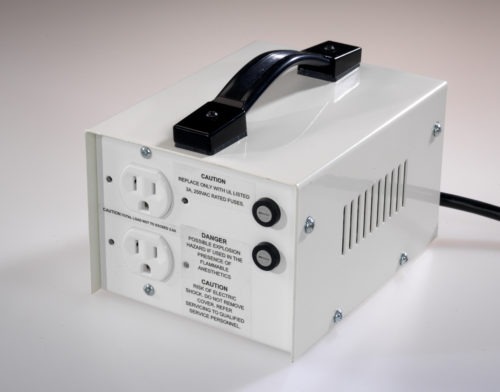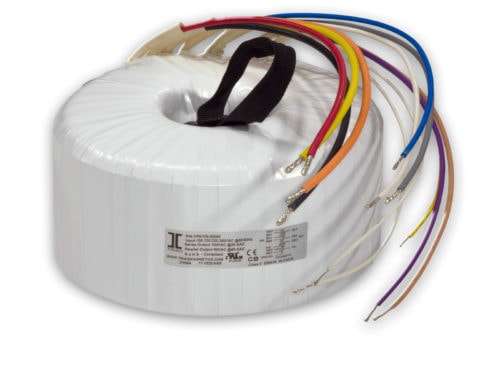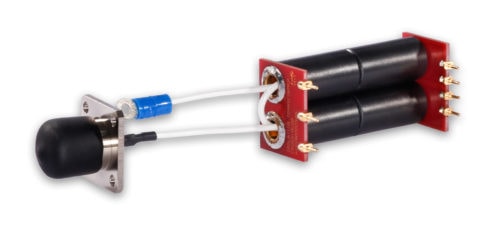It's no secret the medical industry is full of regulations to keep patients and practitioners safe. However, many may not know that additional regulations are required for electrical transformers used in medical devices. These transformers are specifically designed to protect workers and patients.
Medical transformers provide a wide range of additional benefits over standard transformers. While intended for use in the medical industry, other industries may also use medical transformers due to their high performance. The strict regulations ensure reliability, efficiency, and safety, making medical transformers a popular option for non-medical purposes.
Regulations are governed by the International Electrotechnical Commission (IEC) and Underwriters Laboratories (UL). These governing bodies publish the rules and safety standards for electronic products used in the medical industry.
This article will explain the four main regulations to which medical transformers must adhere.
Leakage Current
When it comes to medical transformers, leakage current is one of the most important specifications. Current leakage occurs when a current passes through dielectric insulation. While passing, the current can physically leak through the insulation, or capacitive currents appear to cross even with high-grade insulation. Leakage current is often caused by the capacitance from primary to ground or primary to secondary circuits. 
Excessive current leakage is never desirable in any industry. But in the medical industry, current leakage can have fatal results. As such, IEC and UL have strict regulations when it comes to leakage currents. Modern standards require the transformer to be properly energized before measuring the leakage current.
Lower leakage is generally ideal for medical applications. Most standards prescribe the maximum leakage at 100 µA.
Some transformers, including those from Triad Magnetics, have an electrostatic shield. This shield is placed between the primary and secondary. When grounded, the shield helps redirect the leakage current flow to ground as opposed to the secondary.
To better understand how transformer leakage current is measured in medical transformers, you can download our E-book, Leakage Current Testing Requirements for Medical Grade Transformer.
Fusing Requirements

In most applications, there are two types of fuses: overcurrent and thermal.
Overcurrent: An overcurrent fuse is required on all medical electronic pieces and medical devices. These fuses are external and placed in a series in conjunction with the primary or secondary windings. During testing, the fuses are removed and overload tests are conducted on secondary windings.
Thermal: The need for thermal fusing is often determined by an external safety agency standard. A thermal breaker fuse provides engineers and designers some flexibility with the design. Thermal breakers are often selected as an add-on to primary overcurrent fuses. The thermal fuse can interrupt the current flow, providing an open circuit when the transformer is overheated. Unlike overcurrent fuses, thermal fuses are located within the transformer.
The Hipot Test
A "hipot test" is short for "high-potential test.” The test provides a way to verify the insulation's capability to withstand a specific voltage without resulting in an electrical breakdown. The test is intended to ensure the insulation will withstand a voltage amount that is significantly higher than the expected working voltage. The test can be performed on any two materials separated by insulation.
The hipot test is conducted by applying the high voltage between any two points that are supposed to be electrically isolated. The two points can vary. They may include electrical circuits and chassis ground, or primary and secondary circuits. No matter the designated points, leakage current is measured.
Hipot transformer test results are considered a failure when the leakage current exceeds a designated limit. Additionally, rapid or uncontrolled increases in leakage current, or observed arcing, can result in failure. Typical leakage maximum tolerances span from 0.5 to 20 mA.
Temperature Classes
In the world of medical transformers, temperature ratings can vary a significant amount. Generally, the higher the temperature rating of an insulation system, the less likely it is to break down during an extreme test. Additionally, higher temperature ratings within transformer insulation increase the likelihood that it will pass the hipot test. Because of these benefits, many engineers opt for higher temperature classes when designing medical transformers.
Work With Triad Magnetics
Triad Magnetics has been an industry leader in electronic components for over 75 years. While we have thousands of designs on hand, our talented team can work with clients to design something new. With manufacturing hubs in three different countries, we can easily integrate electrical components into your supply chain.
Still have questions? You can contact us anytime. Already have a project in mind? Don't hesitate to request a quote now.







